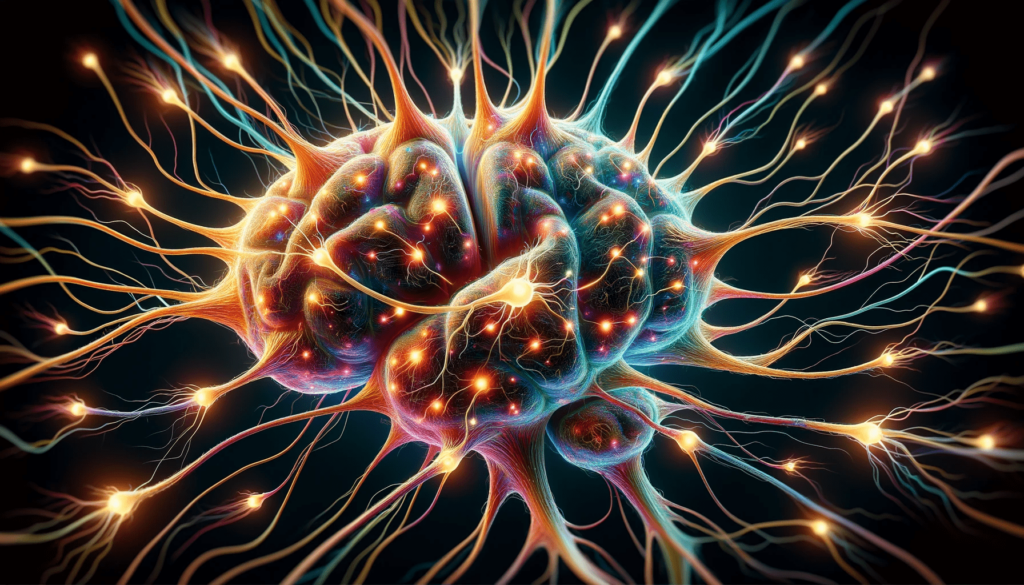N-Methamphetamine, often simply referred to as methamphetamine, is a potent central nervous system (CNS) stimulant known for its recreational use and potential for addiction. It’s part of the phenethylamine and amphetamine chemical classes.
Methamphetamine was first synthesized from ephedrine in 1893 by Japanese chemist Nagai Nagayoshi. Its more potent form, crystal methamphetamine, was later developed by Akira Ogata in 1919.
In the 20th century, methamphetamine was used for a range of medical purposes, including treating narcolepsy, ADHD, and, during World War II, to keep soldiers alert.
By the mid-20th century, the abuse potential of methamphetamine became evident. Its recreational use escalated in the 1960s, leading to stricter regulations globally.
Methamphetamine, known for its powerful stimulant effects and potential for abuse, has acquired numerous street names: Crystal, Ice, Meth, Crank, Chalk, etc.
To be honest, I really don’t like meth. I have seen too many times what it does to people and know how it happens, and what meth is capable of in terms of pharmacology and its effect on the structures of our brain, psyche, and personality. In my opinion, meth is the most dangerous of stimulants. Therefore, it is difficult for me to be completely objective in this article. But let’s continue.
How Meth Works

Methamphetamine works primarily by affecting the brain’s neurotransmitter systems. It’s a potent CNS stimulant. In the brain, dopamine, serotonin, and norepinephrine play crucial roles in its normal functioning. When methamphetamine enters the brain, it causes excessive production of these neurotransmitters, especially releasing high levels of dopamine into the spaces between neurons (synaptic clefts). Methamphetamine also prevents dopamine from being reabsorbed into storage vesicles.
Meth Stereoisomers
Meth in the bloodstream exists as d and l isomers, which are important for toxicological analysis. The d-enantiomer has a shorter lifespan in the body and is metabolized and excreted more rapidly than the l-enantiomer. The d-enantiomer is primarily responsible for methamphetamine’s central stimulant effects, in contrast to the l-methamphetamine.
The composition of illicit methamphetamine can vary based on the manufacturing process, ranging from pure d-methamphetamine to a mix of both d and l forms. Research by Mendelson et al. highlights that the d-enantiomer largely drives the effects seen in illegally produced methamphetamine. High doses of l-methamphetamine can induce effects similar to those of d-methamphetamine, but these effects are shorter-lived. The l-enantiomer is typically derived from prescription medications.
Different illicit synthesis methods can result in varying ratios of d- and l-methamphetamine. For example, producing methamphetamine from ephedrine or pseudoephedrine tends to yield a higher proportion of d-methamphetamine, thus enhancing the drug’s purity and strength. Conversely, using pre-precursor chemicals like phenyl-2-propanone (P2P), which is also a precursor for pseudoephedrine, can produce a mix of both d and l isomers. Specific purification techniques might be employed to increase the ratio of d-methamphetamine in the final product, thereby enhancing the drug’s purity and effects.
Dopamine System
Methamphetamine causes neurons to release large amounts of dopamine, a neurotransmitter associated with pleasure, reward, and motor function. This is primarily done by interacting with the dopamine transporter (DAT) and vesicular monoamine transporter 2 (VMAT2).
It also blocks the reuptake of dopamine by the DAT, leading to increased concentrations in the synaptic cleft (the space between neurons). The elevated dopamine levels in the synaptic cleft enhance signaling to the receiving neuron, leading to the intense feelings of euphoria and increased energy that characterize methamphetamine highs.
The intense activation of the brain’s reward pathways by methamphetamine leads to the drug’s high potential for addiction. The brain adapts to the elevated dopamine levels, leading to tolerance and dependence.
Norepinephrine and Serotonin Systems
Meth increases the release of norepinephrine, contributing to its stimulant effects such as heightened alertness and wakefulness. It’s also responsible for the increase in heart rate and blood pressure associated with methamphetamine use.
While its effects on serotonin are less potent than on dopamine and norepinephrine, methamphetamine does increase serotonin release and inhibits its reuptake, contributing to mood changes and sometimes hallucinogenic effects at high doses.
Effects, Routes, and Timing
Users experience increased energy, alertness, and euphoria, along with decreased appetite and increased sociability.
It can be taken orally, snorted, smoked, plugged, or injected. The route of administration impacts its onset and intensity of effects. I strongly recommend against using injections and the rectal route to consume meth. Both of these options multiply and accelerate the appearance of all risks, aggravate the course of disorders, and create additional challenges for those who want to get out of the current situation. But to be honest, I can’t help but write. Just don’t mess with the meth. It’s a very bad substance.
Meth has a fairly long-lasting effect. For non-regular users, the effects can be observed for up to 24 hours. As tolerance increases, these numbers will fall. Meth has a biological half-life of about 9 to 12 hours, meaning it can remain active in the body for an extended period.
Risks and Dangers of Meth

Methamphetamine use poses numerous risks and dangers, impacting various aspects of physical health, mental health, and overall well-being. These risks can be acute (short-term) or chronic (long-term), and the severity often correlates with the duration and intensity of use.
Physical Health Risks
- Neurotoxicity: Methamphetamine use can lead to oxidative stress and neurotoxicity, particularly in dopamine neurons. Chronic use can result in lasting damage to the dopaminergic system. Long-term use can also lead to changes in brain structure and function, particularly in areas related to emotion and memory, such as the limbic system. These neurochemical and structural changes can lead to cognitive deficits, mood disorders, and other psychological problems in chronic users.
- The harmful effects of methamphetamine on the CNS involve the deterioration of monoaminergic terminals and the initiation of neuronal cell death (apoptosis). Recent findings also indicate that meth use triggers autophagic processes in the brain (cells destroy themselves). However, it’s still unclear whether these autophagic changes are early signs of neuronal apoptosis or a defensive response against the drug’s neurotoxicity. Various biochemical processes collectively lead to terminal damage and neuronal apoptosis in the mammalian brain. Given the potential pathobiological impacts observed in the brains of meth users, especially those consuming high amounts, it’s crucial for those developing treatments for use disorder to consider these toxic effects.
- Cardiovascular Issues: Methamphetamine can cause increased heart rate, blood pressure, and risk of cardiac arrhythmias and heart attacks. Chronic use may lead to the development of cardiomyopathy and increase the risk of both hemorrhagic and ischemic strokes.
- Dental Problems (“Meth Mouth”): Severe dental decay and gum disease are common, likely due to a combination of poor hygiene, dry mouth, teeth grinding, and consumption of sugary drinks.
- Skin Sores and Infections: Users might experience skin sores and infections due to scratching and picking at the skin, a behavior often associated with methamphetamine use.
- Weight Loss and Malnutrition: Appetite suppression can lead to significant weight loss and malnutrition.
- Sexual Dysfunction: While initially it may enhance libido, chronic use can lead to sexual dysfunction.
- Risky Behaviors: Under its influence, individuals are more likely to engage in risky behaviors, including unprotected sex and needle sharing, increasing the risk of sexually transmitted infections (STIs) and blood-borne viruses like hepatitis.
Mental Health Risks
- Addiction: The intense dopamine release caused by methamphetamine use can lead to strong psychological dependence and addiction.
- Withdrawal Symptoms: Depression, anxiety, fatigue, and intense cravings are common during withdrawal, making cessation difficult.
- Psychosis: Users may experience paranoia, hallucinations, and delusions, particularly during binges or with chronic use.
- Mood Disorders: Depression, anxiety, and mood swings are common, both during use and in withdrawal.
- Cognitive Impairments: Long-term use can lead to memory loss, decreased executive functioning, and impaired judgment.
Social and Behavioral Risks
- Impact on Family and Friends: The user’s behavior can have a profound negative impact on their family and friends, often leading to strained or broken relationships.
- Impaired Social Functioning: Relationships, employment, and social responsibilities often suffer due to the behavioral effects and lifestyle changes associated with meth use.
- Legal and Financial Problems: The illegal status of methamphetamine can lead to legal issues, and the cost of sustaining the addiction can lead to financial instability.
Meth vs Harm Reduction

While the best way to avoid these risks is to abstain from use, harm reduction strategies can mitigate some risks for those who do use.
Safe Usage Practices
- Test the Substance: If possible use test kits to check the purity of methamphetamine, as street drugs often contain harmful additives or different drugs altogether.
- Avoid Injecting: If possible, avoid injecting or plugging meth to reduce the risk of vein damage, abscesses, and transmission of blood-borne diseases.
- Clean Equipment: Use clean, sterile equipment every time.
- Avoid Combinations: Try not to mix honey with other substances. This can not only ruin the evening but create a dangerous and irreparable situation. Alcohol greatly increases the neurotoxicity of meth. Opioids increase the risk of cardiac arrest, coma, and death in combination with meth and other stimulants.
- Dosage: Start slow. You always can do more.
| Oral | Insufflated | Smoked | |
| ⚪ Light | 5 – 10 mg | 4 – 8 mg | 5 – 10 mg |
| 🟡 Medium | 10 – 25 mg | 8 – 15 mg | 10 – 20 mg |
| 🔴 Severe | 25 mg + | 15 mg + | 20 mg + |
Planning for Emergencies
- Know the Signs of Overdose: Be aware of the signs of stimulant overdose or overamping, and know how to respond, including seeking immediate medical help.
- Emergency Contact Information: Have contact information for emergency services, and inform peers about what to do in case of an emergency.
- All this is especially important if you plan to use drugs alone.
Health Monitoring and Care
- Dental Care: Don`t forget to practice oral hygiene and seek regular dental care to combat “meth mouth.”
- Nutrition and Hydration: Maintain a balanced diet and stay hydrated, as meth can suppress appetite and lead to malnutrition and dehydration.
- Sleep and Rest: Try to maintain regular sleep patterns. Methamphetamine disrupts sleep, leading to physical and mental health problems.
- Safe Sex Practices: Use protection during sexual activities to reduce the risk of sexually transmitted infections (STIs).
- General Tips: Try to get medical check-ups at every opportunity. Sometimes it’s easier than it seems. Do not forget to be treated if you get sick even with a common cold. Try not to use it when you are ill or during an exacerbation of a chronic illness.
Mental Health Support
- Be Aware of Mental Health: Be vigilant about changes in mental health, such as signs of depression, anxiety, or psychosis, and seek help if needed.
- Counseling and Support Groups: Engaging in counseling or support groups can provide emotional support and strategies for coping with addiction and its consequences. Engage with harm reduction and peer support networks. These communities often provide resources, education, and support for safer drug use.
- Educate Yourself and Others: Stay informed about methamphetamine and its effects, and share harm reduction strategies with peers.
- Take care of yourself. Don’t be afraid to ask for help. Don’t leave yourself alone. Remember that there are many people around who are ready to help. Sometimes they are not easy to find, but they are always there. Remember your family and friends, but don’t start using them. It will only make it worse.
Implementing these harm reduction practices can significantly reduce the risks associated with meth use. However, it’s important to recognize that the most effective way to eliminate these risks is to abstain from use. For those seeking to stop using methamphetamine, professional treatment and support are crucial.
Final Thoughts

The last research shows a noticeable increase in methamphetamine use in the United States. This rise is seen across various demographics and regions. Significantly, this uptick in meth use is closely connected to the ongoing opioid crisis. Many individuals using opioids, or with opioid use disorder, are increasingly using methamphetamine. Reasons for methamphetamine use include its use as a substitute when opioids are unavailable, to help control opioid consumption, or as a perceived safer alternative compared to heroin or fentanyl.
There’s a notable escalation in the availability of high-quality, potent meth, now sold in diverse forms at relatively low prices. The addition of fentanyl and other synthetic opioids to methamphetamine supplies might be increasing overdose risks and other dangers.
With the surge in overdose incidents, new challenges arise in prevention, treatment, and harm reduction efforts, requiring innovative approaches across community and health systems. These efforts need real-time awareness of local use patterns and overdose trends.
Systems like OD-MAP use technology to track overdoses and enable rapid response and communication to reduce harm. Engaging various stakeholders and ensuring secure data sharing is crucial for effective coordination and service integration. Community awareness can be boosted through dashboards tracking overdose incidents.
Overdose fatality reviews (OFRs) are another strategy. They involve interdisciplinary teams reviewing overdose deaths to identify intervention opportunities and address gaps through policy and program changes. OFRs can uncover needs like treating co-occurring mental illnesses and better-targeting resources to vulnerable groups. They also promote service improvements, such as telehealth, which gained prominence during the COVID-19 pandemic.
Methamphetamine is a powerful central nervous system stimulant with a high potential for addiction and serious health consequences. Its effects on the brain cost significant long-term risks. The drug’s impact extends beyond the individual user, affecting families, relationships, and communities. The cycle of addiction it often creates poses a complex challenge, encompassing psychological, physical, and social dimensions.





This website is phenomenal! I’m awestruck and expect more such extraordinary content!